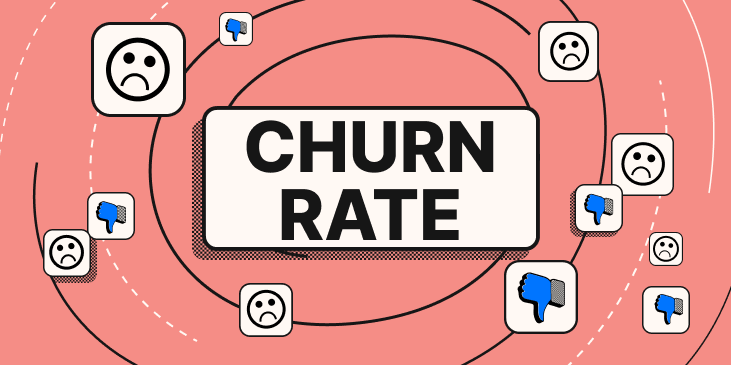
Churn Rate: Unraveling its Significance and Computation Process
The business landscape is filled with unique terms that describe various processes and metrics. One such term is “churn rate,” which holds significant value in any business strategy.
Table of Contents
ToggleDefining Churn
In simplest terms, churn refers to the number of customers or subscribers who stop using a company’s product or service over a specific period. This phenomenon is common in all businesses, particularly in the Software-as-a-Service (SaaS) industry. In the world of SaaS, customers pay a subscription fee to use a software product. If they stop using it, they’re said to have “churned.”
Calculating Churn Rate
The churn rate, also known as the rate of attrition, is calculated by dividing the number of customers lost during a given period by the number of remaining customers at the start. For instance, if you started the quarter with 200 customers and lost 20, your churn rate would be 10%.
Revenue Churn Rate
While the traditional churn rate focuses on the number of customers, the revenue churn rate instead looks at the lost revenue. This rate reflects the amount of recurring revenue lost due to churn. Revenue churn helps businesses understand the financial impact of losing customers, especially when larger, high-paying customers discontinue their service.
Exploring Churn Rate Further
When should you calculate your company’s churn rate?
There is no hard and fast rule about when to calculate the churn rate. However, it’s typically calculated monthly, quarterly, or annually. Standard calculation helps businesses track changes in customer behaviour and adjust their strategies accordingly.
What’s an acceptable churn rate?
An acceptable churn rate largely depends on the industry and the maturity of the business. Generally, a lower churn rate is preferable. However, a churn rate of 5-7% annually is acceptable for SaaS businesses.
Does churn rate influence other SaaS metrics?
Absolutely. Churn rate has a significant impact on other key SaaS metrics like the Customer Acquisition Cost (CAC), Customer Lifetime Value (CLV), and Monthly Recurring Revenue (MRR). High churn rates can erode profitability by increasing CAC and decreasing CLV and MRR.
Why is Churn Rate Significant for a Business?
The churn rate is significant for several reasons. Firstly, it’s a clear indicator of customer dissatisfaction. If customers leave, they’re not finding value in your product or service; secondly, acquiring new customers is more expensive than retaining existing ones, making a high churn rate a costly problem. Lastly, a churn rate can significantly affect a company’s growth and profitability.
Identifying Reasons for Customer Loss
Understanding why customers churn is as important as knowing the churn rate. This knowledge helps businesses to address the root causes and improve customer retention. Common reasons for churn include poor customer service, lack of product value, and better alternatives offered by competitors. Businesses can identify these reasons through exit surveys, customer feedback, and data analysis.
Strategies to Reduce Churn Rate
Before concluding, discussing how businesses can actively work to reduce their churn rate is important. The first step is understanding the reasons behind customer loss, but taking action is equally important.
Improve Customer Service
Often, customers churn because they feel they need to be more appreciated. Improving your customer service can make customers feel valued and attended to, reducing the likelihood of leaving.
Invest in Customer Success
This involves proactively helping customers achieve their goals using your product or service. It might mean offering training sessions, creating informative content, or providing personalized guidance.
Regularly Update and Improve Your Product
A static product in a dynamic market is a recipe for churn. Regular updates and improvements signal to customers that you’re committed to providing value and staying competitive.
Build Strong Relationships
This can be as simple as regular check-ins to see how customers are doing and if they face any issues. Strong relationships can increase customer loyalty and reduce churn.
Offer Competitive Pricing
If customers are churning because of price, consider reviewing your pricing strategy. This doesn’t necessarily mean lower prices but more flexible plans or pricing tiers.
Seek Regular Feedback
Finally, regular customer feedback is invaluable in identifying issues before they cause churn. Feedback helps you understand what you’re doing well and where to improve.
In implementing these strategies, it’s essential to remember that not all churn can be prevented. Some level of churn is a normal part of the business. However, you can improve customer satisfaction and business performance by proactively reducing churn.
A Final Word
Churn rate is a vital metric that businesses must track and analyze regularly. It provides valuable insights into customer satisfaction, the effectiveness of retention strategies, and the business‘s overall health. By understanding and reducing churn, companies can enhance customer loyalty, increase lifetime value, and drive sustainable growth.


